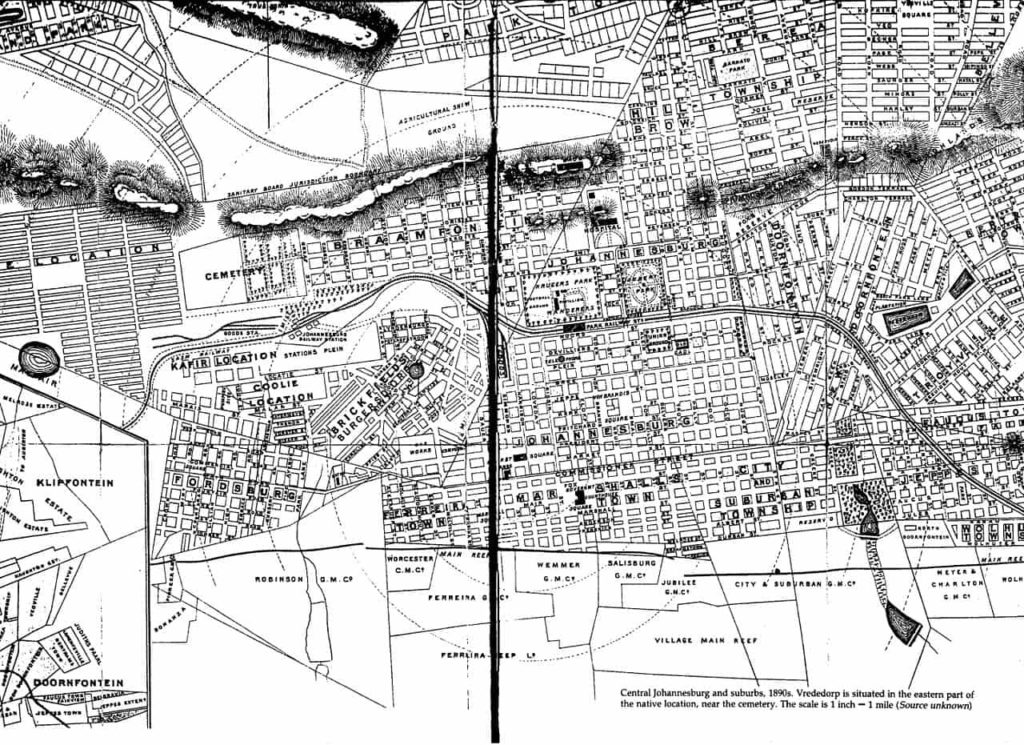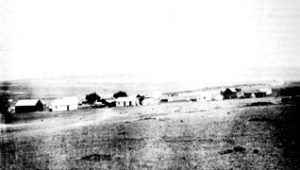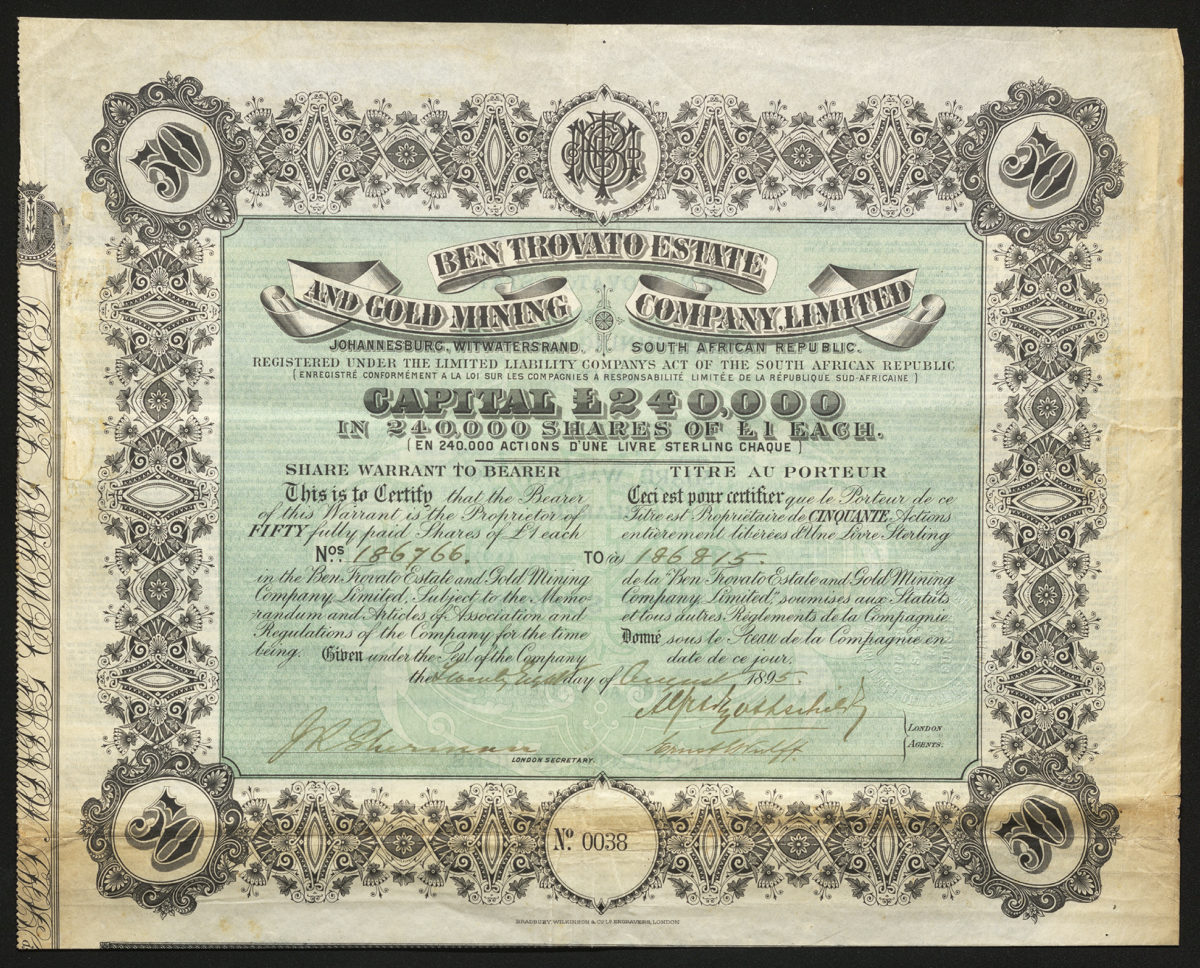
Alfred de Rothschild Strikes Gold in South Africa
The Witwatersrand Gold Rush began in 1886 near present-day Johannesburg, South Africa after rich gold deposits were found on a small farm. The Ben Trovato Estate and Gold Mining Company in South Africa began nine years later. Director of the Bank of England at the time Alfred de Rothschild, from the House de Rothschild banking dynasty, signed this certificate.
Header Image: An 1890s map showing the surrounding area and mining claims of Johannesburg; courtesy Wikimedia Commons [1].
“The gold changed the face of the Transvaal. Before 1886 it had been a poor, struggling Boer republic, but ten years later, it was the richest gold mining area in the world. ”

The farm where gold was first discovered in Witwatersrand 1886; courtesy Wikimedia Commons
The 1884 discovery of gold in Africa marked a turning point in the continent’s history. Within a few decades, most of Africa had been divided between European colonial powers. The site of this discovery was Witwatersrand, South Africa, and the Witwatersrand Gold Rush began in 1886. The city of Johannesburg grew out of a mining camp at the site, rapidly overtaking Pretoria in prominence. South Africa later took on the name “Rand” for its currency, in reference to this historic gold strike.
This bond for the Ben Trovato Estate and Gold Mining Company in South Africa dates from 1895, nine years after the Witwatersrand Gold Rush began in 1886. Little is known about this particular mining interest, other than its ownership and liquidation in the early 1900s. (Scroll down to continue reading about Alfred de Rothschild below)
One of the agents for the company who signed this document was Alfred de Rothschild, from the London branch of the famous Jewish banking dynasty, the House of Rothschild. Alfred became the first Jew appointed to the position of director of the Bank of England in 1868 and served for twenty years. The House of Rothschild was involved in both the gold and diamond mining rushes in the late 19th and early 20th century and partnered with Cecil Rhodes who founded the diamond empire of De Beers. Rhodes was a staunch imperialist who aided the British government in acquiring colonies in Africa; Zambia and Zimbabwe were in fact named Northern Rhodesia and Southern Rhodesia while under British control.
The interest warrants at the bottom of this certificate, which were to be removed in order to collect interest on the bond, are still all in place. The fact that this bond remains intact implies that the warrants could not be collected; the mine likely did not default on payments but rather may have been bought out or absorbed by another corporation.
 University of Nevada, Reno
University of Nevada, Reno
